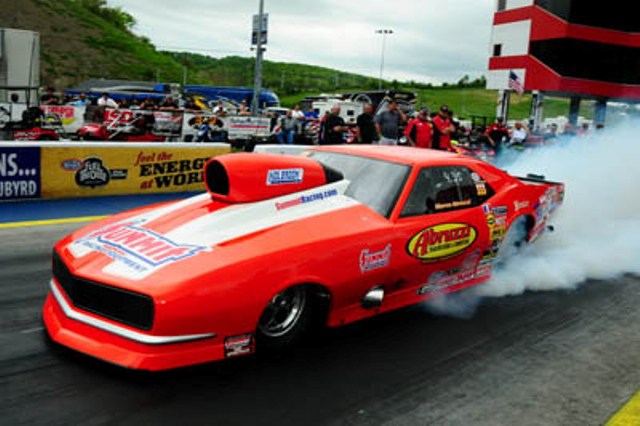How does Warren Johnson seem to squeeze every last ounce of power from his engines? What is the secret to Greg Anderson’s consistency race in and race out?
Those are good questions. And we’ve got good answers, because guys like Anderson, Don Garlits, and other accomplished professional and sportsman racers have shared some of the secrets to their incredible success with us. Read and learn as they take you from pre-race preparation to the finish line over the next few weeks. In this fourth and final part of our series, we share some secrets to better race consistency courtesy of legendary race instructor Frank Hawley.
Consistency wins races.
No formulas, data, or ratios will ever be predictable and repeatable if your car is inconsistent. Here are some important tips, courtesy of Frank Hawley, that will eliminate variables and improve your consistency:
- Monitor for consistent fluid temperatures. You need to monitor water, transmission fluid, and engine oil temperatures and try to keep them as consistent as possible from run to run–within +/-5 degrees if possible. This may require a good warmup before the first run and extra cooldown time in the late rounds.
- Stage the same way every time. Since consistent 60-foot times are the basis for predictable runs, staging is very critical. Varying stage position by as little as one inch will affect 60-foot times. Also, excessive rubber buildup or running immediately after the track has been scraped will alter your rollout and 60-foot times. Staging off-center has the same effect at some tracks.
- Adjust your tire pressure accordingly. Tire pressure is very important, so you should check your tire pressure gauge for accuracy against a known standard on a monthly basis or invest in a top-of-the-line gauge that maintains its calibration. If you don’t carry an air tank to the staging lanes, leave your rear tires 1/8 to 3/8 of a pound overfilled when the leaving the pits. You can always let air out in the lanes. By adjusting tire pressure, you can increase or decrease traction according to changing track conditions.
- Consider the lighting. Reaction time, especially on a Pro tree or when top bulb racing, is dramatically affected by light perception. While darkness or sunlight affect perception, contrast (bulb to background) is the most important factor. Overcast skies, track lighting, blinders, shields, bulb covers, etc. all play key roles. Use shaded lenses or sunglasses.
- Pay attention to others. Do you see a fast or slow trend in the other classes? Pay attention to runs when one driver redlights–breakouts are no longer a factor and both drivers generally will run all-out to the finish line.
- Observe wind conditions. While it’s easy to determine wind by looking at the flag on the starting line, you should be more concerned with track level conditions. Watch the burnout smoke for wind direction and speed. Many tracks have swirling winds.
- Stick with one weather station. Changes in corrected altitude are what affect horsepower. Because two racers’ gauges may read a slightly different number than yours, stick with your system to eliminate guesswork.
- Make dial-in and timer decisions in your pit area. Racers tend to be more logical and less distracted when not sitting in their race car. Write notes on a sheet of paper and clip it on the dash (leave some “margin” in your final numbers for changes in wind, temperature, etc.). This will help reduce stress and errors once in the car.
- Pay attention to track preparation. Continuous track preparation, especially at national events and races that are spread over several days, requires planning. More traction compound means more friction on your tires throughout the run. If your car is prone to tire spin, it may run quicker. However, if you have a milder combination, chances are the extra drag caused by the compound will slow you down.


Hi…. I have a question regarding consistency after driving to the track.
45 minute drive, on street tires, cool down for nearly an hour and put slicks on….. First pass is ALWAYS a tenth and a half slower than are any subsequent runs….. We are only allowed two time trials before competition so dialing in becomes a guessing game…..
I’ve checked engine temp, trans temp, fuel temp at the tank. I’ve tried replacing spark plugs after getting to the track and even spraying alcohol into the carb before cool down after the drive there. Tire pressure, starting line procedure etc are as close as humanly possible on every pass.
There isn’t one increment in the time slip that is deficient…. First pass is just slower across the board.
The car is a 1985 Montecarlo with a 383, air gap manifold, 10:1 compression, Aluminum heads, not very radical solid lifter flat tappet cam, 200r4 transmission (race version from Extreme automatics), 9″ ford detroit locker with 4.20 gears and M&H slicks (not radials). Suspension is near stock except for boxed rear control arms and air bags in the rear springs.
First pass is around a 12.25, all subsequent passes are in the 12.10 to 12.05 range depending upon air temp etc. Because of this problem, we only have one reliable time run to base our dial in on.
So, my question is what would cause the variation and what can be done short of buying a trailer that might cure this??
This provide you lots of service when you try for the different type of new game here. Thanks a lot